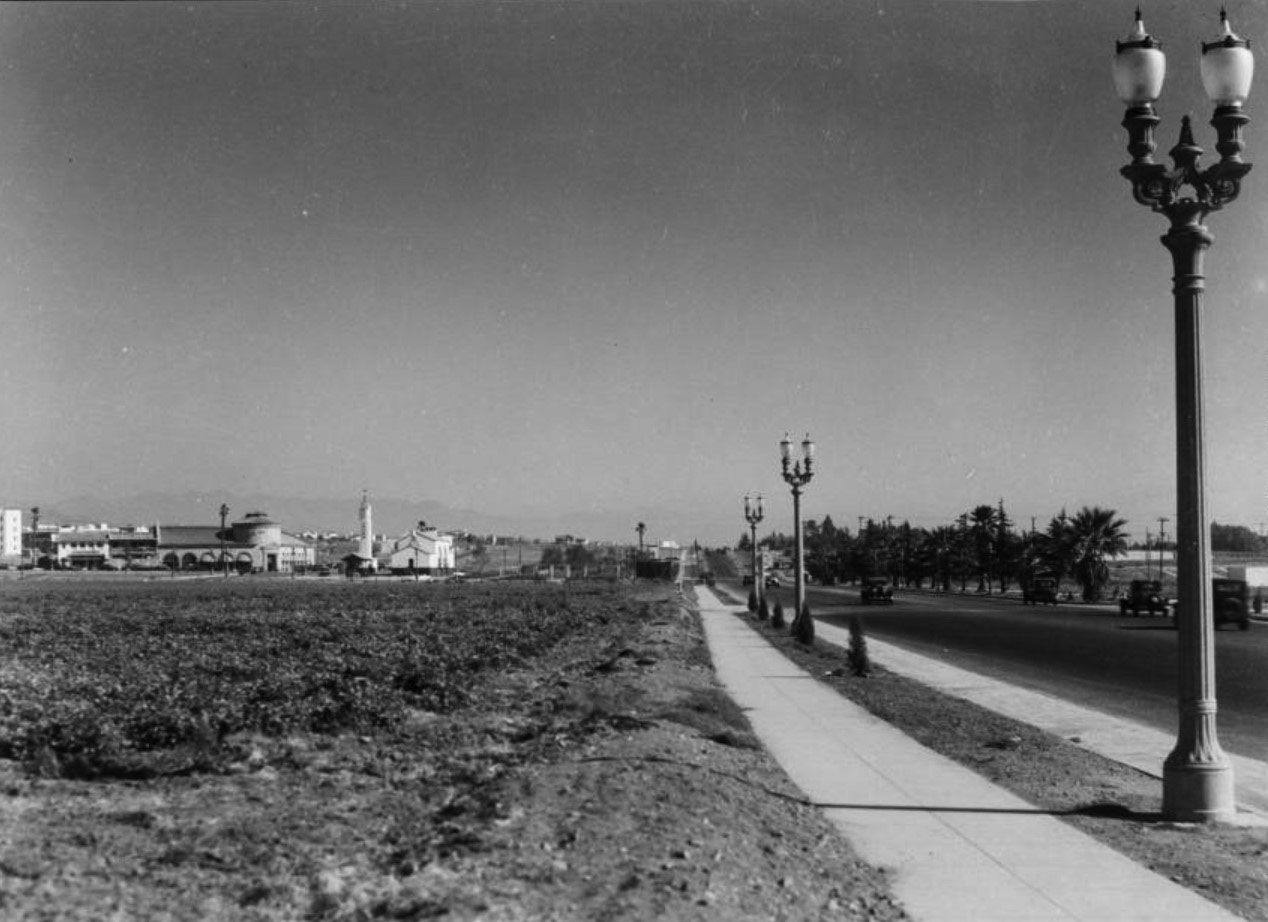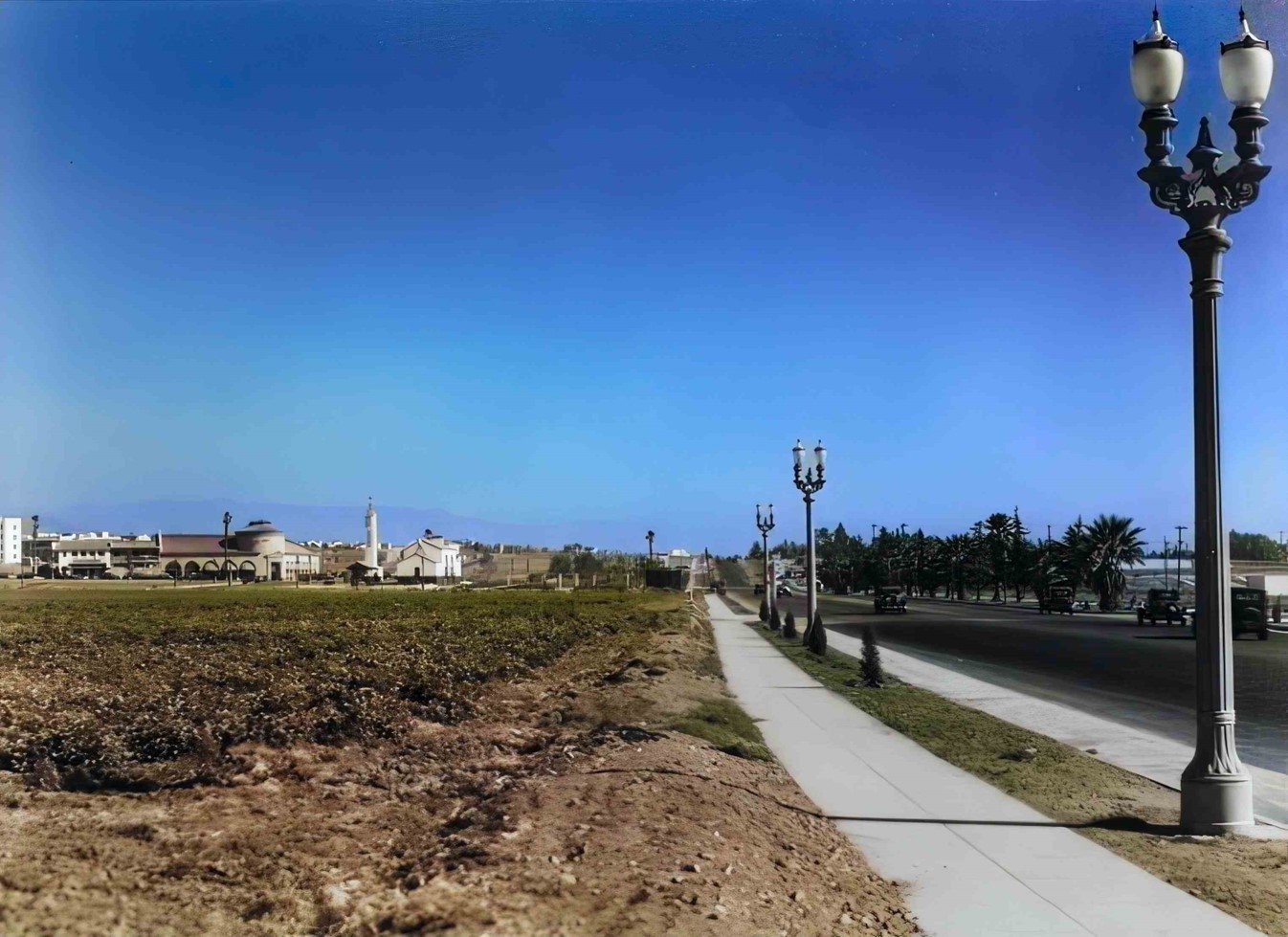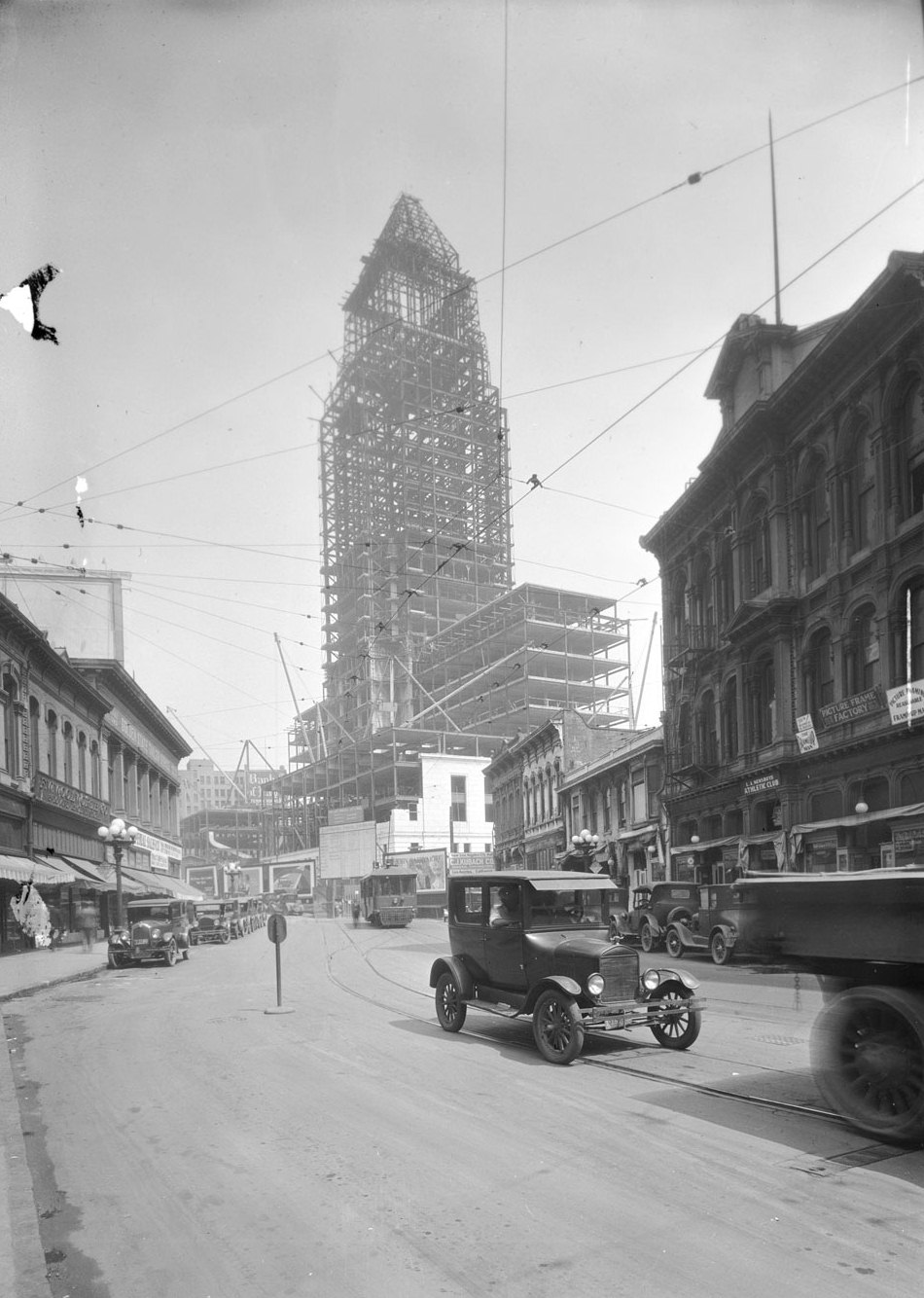Quote:
Originally Posted by Minato Ku

I'm not even sure of that.
Looking in a broader picture if less spaces had been allocated to automobile and more for developments it may have been better for real estate in average.
|
I guess I was thinking more in terms of the US, and Los Angeles in particular. Real estate development greatly shaped LA.
People in LA took to cars very early in the 20th Century. It was the case that most development followed the interurban streetcar lines (the Pacific Electric) as LA was expanding, but as soon as more people started to drive, you would see commercial and residential developments pop up seemingly in the middle of nowhere, nowhere near a streetcar line, surrounded by a lot of vacant land, that would draw traffic.
Westwood, Los Angeles, 1929.
 LADWP
LADWP
A colorized version.
 Colorization by Richard Holoff
Colorization by Richard Holoff
Decentralization in LA started early, and people would drive from miles around just to go to commercial districts on Fairfax Avenue (which had no streetcar line), or the Westside. Wilshire Boulevard, by law, was not allowed to have a streetcar on it (the overhead wires would be too "ugly"), but a bus line did go down Wilshire during the streetcar era.
Los Angeles truly was shaped by the car. Well, drivers.

Even the downtown street grid, which used to have irregular street angles, became straightened out as more people started to drive.
1927, Los Angeles City Hall under construction. 19th Century LA meets 20th Century LA.
 LADWP
LADWP
This street is no longer curved, and is wider.



